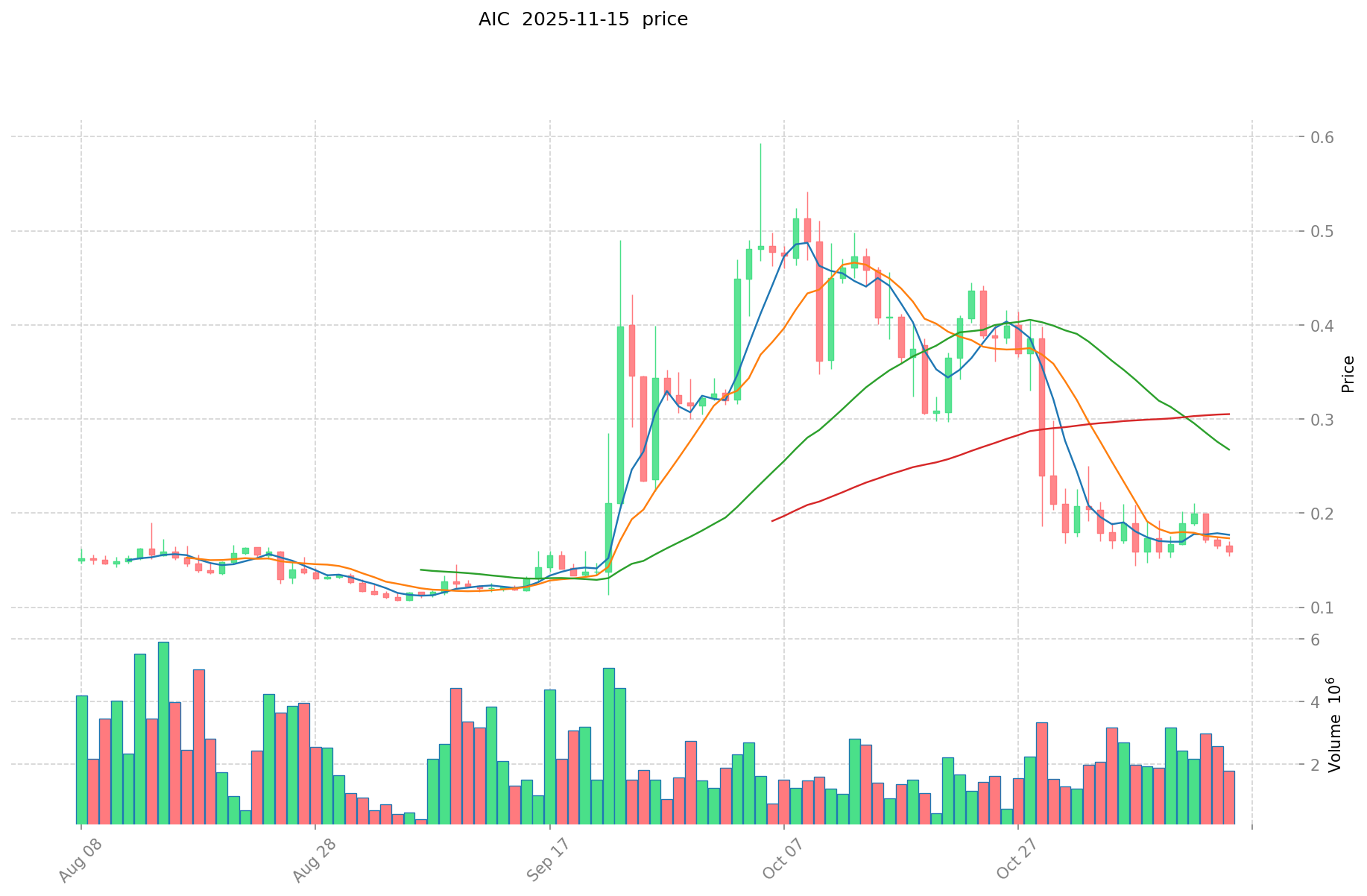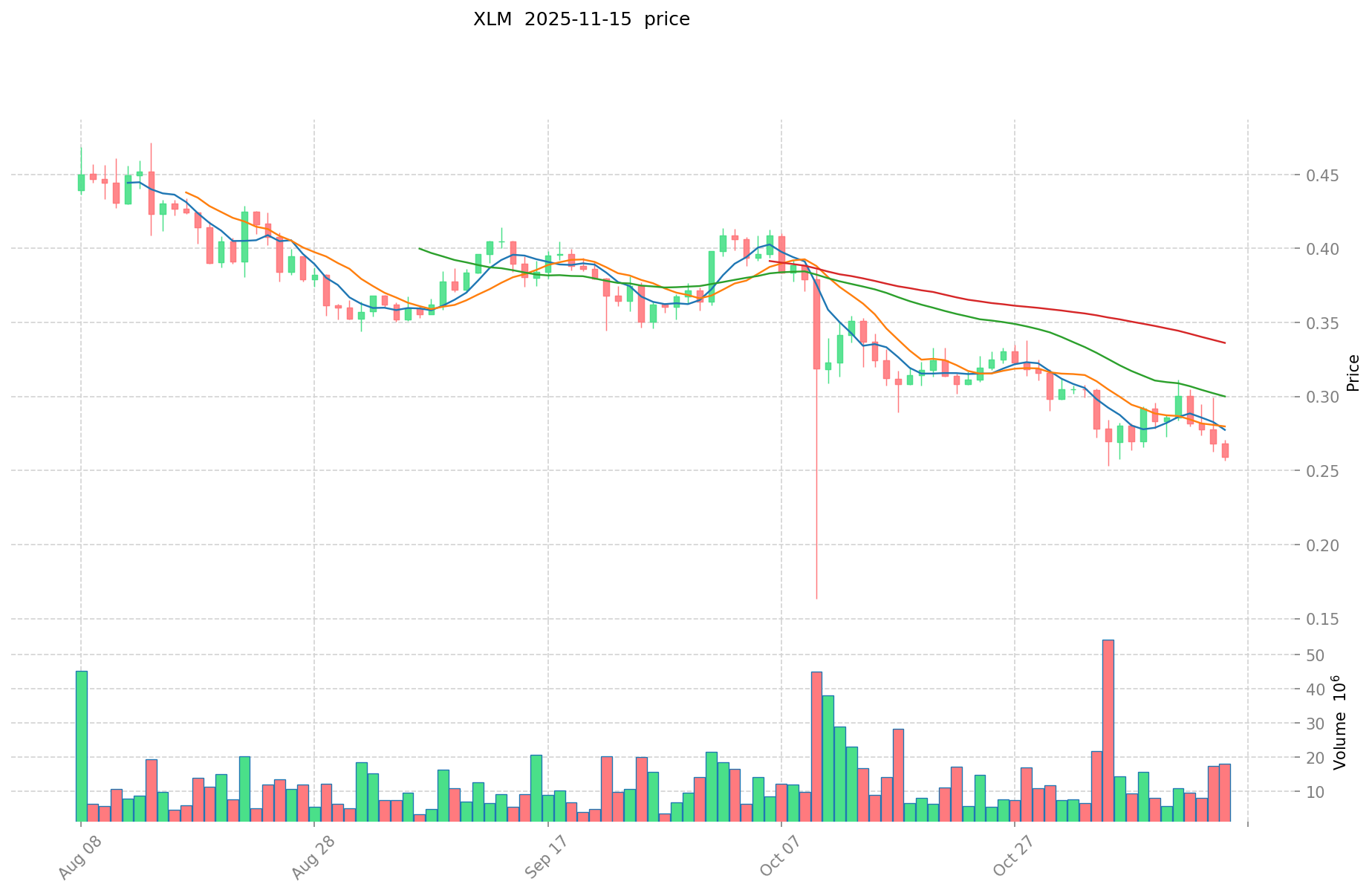AIC vs XLM: A Comparative Analysis of Two Leading AI Language Models
Introduction: Investment Comparison between AIC and XLM
In the cryptocurrency market, the comparison between AI Companions vs Stellar has been an unavoidable topic for investors. The two not only show significant differences in market cap ranking, application scenarios, and price performance, but also represent different positioning in crypto assets.
AI Companions (AIC): Since its launch in 2024, it has gained market recognition for its personalized, immersive digital companionship experiences.
Stellar (XLM): Since its inception in 2014, it has been hailed as a decentralized gateway for transferring digital and fiat currencies, becoming one of the cryptocurrencies with high global trading volume and market capitalization.
This article will comprehensively analyze the investment value comparison between AIC and XLM, focusing on historical price trends, supply mechanisms, institutional adoption, technological ecosystems, and future predictions, attempting to answer the question that concerns investors the most:
"Which is the better buy right now?"
I. Price History Comparison and Current Market Status
AI Companions (AIC) and Stellar (XLM) Historical Price Trends
- 2024: AIC launched at $0.005, experiencing significant growth in its first year.
- 2018: XLM reached its all-time high of $0.875563 on January 3, 2018, during the cryptocurrency bull market.
- Comparative analysis: In recent market cycles, AIC rose from its launch price of $0.005 to its all-time high of $0.59333, while XLM has shown long-term stability, maintaining a price above its initial levels.
Current Market Situation (2025-11-16)
- AIC current price: $0.1659
- XLM current price: $0.25996
- 24-hour trading volume: AIC $522,456.30 vs XLM $1,396,915.47
- Market Sentiment Index (Fear & Greed Index): 10 (Extreme Fear)
Click to view real-time prices:
- Check AIC current price Market Price
- Check XLM current price Market Price


II. Core Factors Affecting the Investment Value of AIC vs XLM
Supply Mechanisms Comparison (Tokenomics)
- AIC: Fixed supply model with a maximum cap of 3 billion tokens
- XLM: Deflationary model with a 50 billion token cap and 0.00001 XLM transaction fee burn mechanism
- 📌 Historical Pattern: Fixed supply models tend to create scarcity-based value appreciation over time, while deflationary models that actively burn tokens can accelerate price appreciation during high network usage periods.
Institutional Adoption and Market Applications
- Institutional Holdings: XLM has greater institutional adoption with partnerships including IBM, Deloitte, and various banking institutions, while AIC is still establishing its institutional presence
- Enterprise Adoption: XLM has gained traction in cross-border payments and settlement systems through the Stellar network's focus on financial inclusion, whereas AIC's enterprise applications are primarily focused on AI governance and computation markets
- Regulatory Attitudes: XLM generally benefits from clearer regulatory status as a utility token focused on payments, while AI-related tokens like AIC face evolving regulatory frameworks across jurisdictions
Technical Development and Ecosystem Building
- AIC Technical Upgrades: Implementation of decentralized AI governance protocols and computation markets for AI model training and inference
- XLM Technical Development: Ongoing improvements to the Stellar Consensus Protocol (SCP) and interoperability enhancements with traditional financial systems
- Ecosystem Comparison: XLM has a more established ecosystem particularly in payments and cross-border transfers, while AIC is developing specialized infrastructure for AI model training, marketplace functionality, and governance applications
Macroeconomic Factors and Market Cycles
- Performance During Inflation: XLM's focus on efficiency in financial transactions potentially provides some inflation hedge properties, while AIC's connection to the growing AI sector may offer technological innovation exposure
- Macroeconomic Monetary Policy: Both tokens are affected by interest rate changes and USD strength, though emerging technology sectors (AI) often face higher volatility during tightening cycles
- Geopolitical Factors: XLM's focus on cross-border payments positions it favorably in environments with increasing global transaction demands, while AIC could benefit from international collaboration in AI development and governance
III. 2025-2030 Price Prediction: AIC vs XLM
Short-term Prediction (2025)
- AIC: Conservative $0.1542 - $0.1659 | Optimistic $0.1659 - $0.1974
- XLM: Conservative $0.2494 - $0.2598 | Optimistic $0.2598 - $0.2780
Mid-term Prediction (2027)
- AIC may enter a growth phase, with estimated price range $0.1216 - $0.2725
- XLM may enter a steady growth phase, with estimated price range $0.2635 - $0.3609
- Key drivers: Institutional capital inflow, ETF, ecosystem development
Long-term Prediction (2030)
- AIC: Base scenario $0.2058 - $0.2982 | Optimistic scenario $0.2982 - $0.4414
- XLM: Base scenario $0.2485 - $0.4008 | Optimistic scenario $0.4008 - $0.4168
Disclaimer
AIC:
| 年份 | 预测最高价 | 预测平均价格 | 预测最低价 | 涨跌幅 |
|---|---|---|---|---|
| 2025 | 0.1973734 | 0.16586 | 0.1542498 | 0 |
| 2026 | 0.268792716 | 0.1816167 | 0.152558028 | 9 |
| 2027 | 0.27249769668 | 0.225204708 | 0.12161054232 | 35 |
| 2028 | 0.335949123159 | 0.24885120234 | 0.1468222093806 | 49 |
| 2029 | 0.30409616925948 | 0.2924001627495 | 0.207604115552145 | 75 |
| 2030 | 0.441407285686645 | 0.29824816600449 | 0.205791234543098 | 79 |
XLM:
| 年份 | 预测最高价 | 预测平均价格 | 预测最低价 | 涨跌幅 |
|---|---|---|---|---|
| 2025 | 0.2780288 | 0.25984 | 0.2494464 | 0 |
| 2026 | 0.303895872 | 0.2689344 | 0.199011456 | 3 |
| 2027 | 0.36088307136 | 0.286415136 | 0.26350192512 | 10 |
| 2028 | 0.3527775230112 | 0.32364910368 | 0.291284193312 | 24 |
| 2029 | 0.463352239283472 | 0.3382133133456 | 0.18601732234008 | 30 |
| 2030 | 0.416814087367117 | 0.400782776314536 | 0.248485321315012 | 54 |
IV. Investment Strategy Comparison: AIC vs XLM
Long-term vs Short-term Investment Strategies
- AIC: Suitable for investors focusing on AI technology potential and ecosystem growth
- XLM: Suitable for investors seeking stability and exposure to cross-border payment solutions
Risk Management and Asset Allocation
- Conservative investors: AIC: 20% vs XLM: 80%
- Aggressive investors: AIC: 60% vs XLM: 40%
- Hedging tools: Stablecoin allocation, options, cross-currency portfolios
V. Potential Risk Comparison
Market Risks
- AIC: Higher volatility due to emerging technology sector and less established market presence
- XLM: Potential for decreased demand if traditional finance systems improve cross-border solutions
Technical Risks
- AIC: Scalability issues, network stability concerns in early stages
- XLM: Potential centralization of validator nodes, security vulnerabilities in smart contract implementation
Regulatory Risks
- Global regulatory policies may impact AIC more significantly due to evolving AI governance frameworks, while XLM may face less scrutiny as an established utility token
VI. Conclusion: Which Is the Better Buy?
📌 Investment Value Summary:
- AIC advantages: Exposure to growing AI sector, potential for high growth in emerging technology market
- XLM advantages: Established ecosystem, partnerships with major institutions, focus on financial inclusion
✅ Investment Advice:
- Novice investors: Consider a higher allocation to XLM for stability, with a small position in AIC for growth potential
- Experienced investors: Balanced approach with equal weighting, adjusting based on risk tolerance and market conditions
- Institutional investors: Strategic allocation to both, with XLM for established use cases and AIC for future AI applications
⚠️ Risk Warning: The cryptocurrency market is highly volatile. This article does not constitute investment advice. None
VII. FAQ
Q1: What are the main differences between AIC and XLM? A: AIC is a newer cryptocurrency focused on AI applications, while XLM is an established token for cross-border payments. AIC has a fixed supply of 3 billion tokens, while XLM has a deflationary model with a 50 billion token cap. XLM has more institutional partnerships, but AIC offers exposure to the growing AI sector.
Q2: Which token has shown better price performance historically? A: XLM reached its all-time high of $0.875563 in January 2018, while AIC's all-time high is $0.59333 since its launch in 2024. XLM has shown long-term stability, while AIC has experienced significant growth in its first year.
Q3: How do the supply mechanisms of AIC and XLM differ? A: AIC has a fixed supply model with a maximum cap of 3 billion tokens. XLM has a deflationary model with a 50 billion token cap and a 0.00001 XLM transaction fee burn mechanism.
Q4: What are the key factors affecting the investment value of AIC and XLM? A: Key factors include supply mechanisms, institutional adoption, market applications, technical development, ecosystem building, and macroeconomic factors such as inflation and monetary policy.
Q5: What are the price predictions for AIC and XLM in 2030? A: For AIC, the base scenario predicts a range of $0.2058 - $0.2982, with an optimistic scenario of $0.2982 - $0.4414. For XLM, the base scenario predicts a range of $0.2485 - $0.4008, with an optimistic scenario of $0.4008 - $0.4168.
Q6: How should investors approach risk management when investing in AIC and XLM? A: Conservative investors might consider allocating 20% to AIC and 80% to XLM, while aggressive investors might opt for 60% AIC and 40% XLM. Hedging tools such as stablecoin allocation, options, and cross-currency portfolios can also be used.
Q7: What are the potential risks associated with investing in AIC and XLM? A: AIC faces higher volatility and potential scalability issues, while XLM may see decreased demand if traditional finance improves cross-border solutions. Both face regulatory risks, with AIC potentially more impacted due to evolving AI governance frameworks.
Share
Content